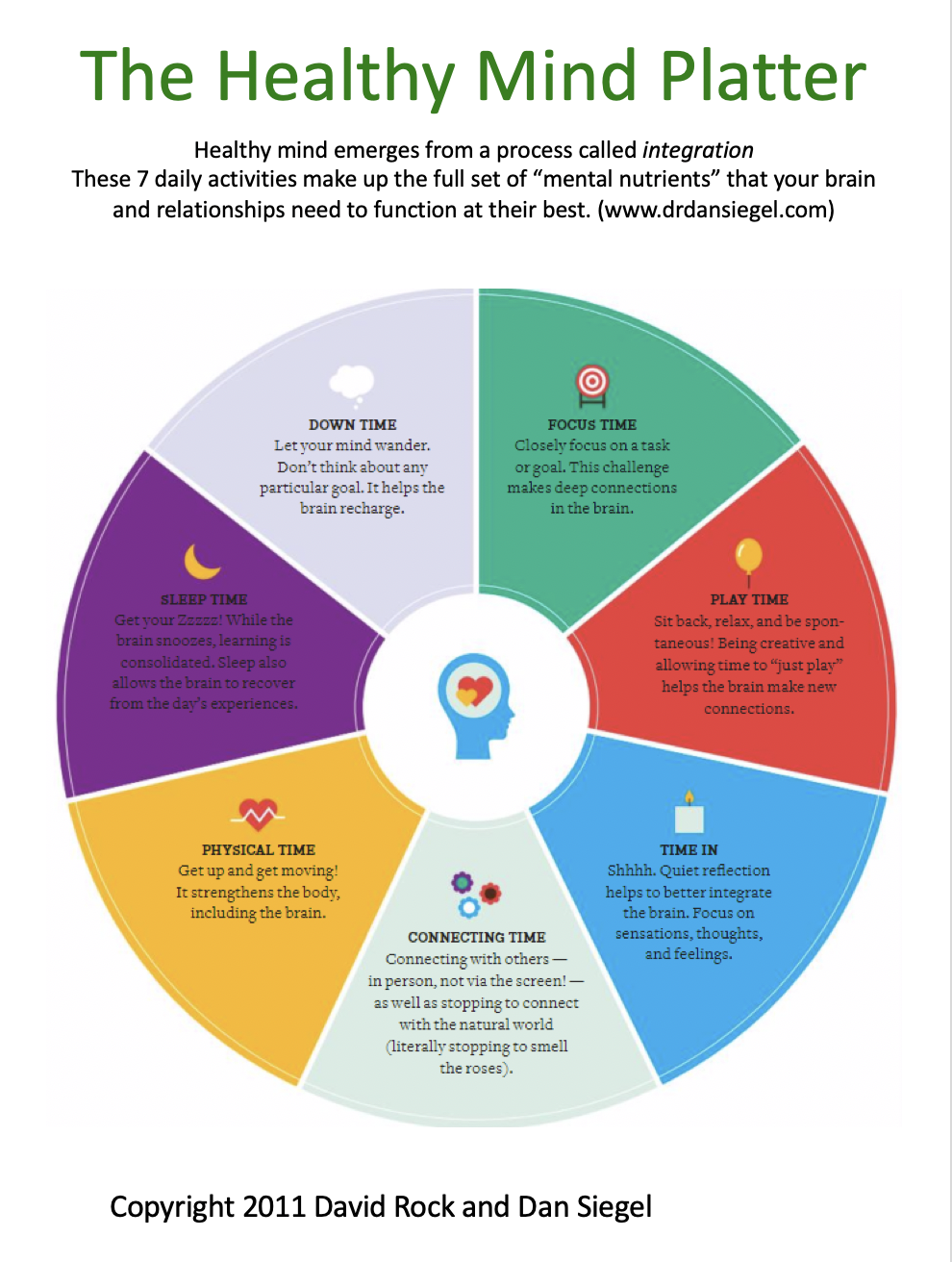Information gathered and prepared by W. Bulthuis MSW, RSW
Clinical Social Worker Portage Medical Family Health Team

The Healthy Mind Platter Through the Holidays
Focus Time:
•Make a list of things you have to do and then prioritize 2 or 3 things. Give yourself permission to let go of some of the others.
•Create a budget and stick to it!
Play Time:
•Take time every day to enjoy one thing – savour one cookie, do a puzzle, sing in the shower.
•Take a moment to enjoy the lights or decorations.
Time In:
•Take 5 minutes to sit, breathe and focus.
•Try identifying 5 things you see, 4 things you hear, 3 things you touch, 2 things you smell, 1 thing you touch.
•Find one (small) thing to be grateful for each day or keep a gratitude journal
Connecting Time:
•Do a random act of kindness – give up your parking spot, compliment the clerk, be generous.
•Reach out – connect with friends, attend your house of worship or volunteer.
•Holidays can include getting together with challenging people! Accept that people are who they are and find ways to minimize their impact on your life.
Physical Time:
•Prioritize time for exercise every day. Keep walking!
Sleep Time:
•Adults need between 7 – 9 hours of sleep a night to allow the brain to recover.
•Having trouble winding down? Try a “relaxation for sleep” recording. (You can find free meditations at: www.uclahealth.org/marc/mindful-meditations)
Down Time:
•Slow down while you do a mundane task. Let your mind wander
while you water the plants, walk the dog or do the dishes.
* If you need help the Distress Line in Niagara is: 905-688-3711
